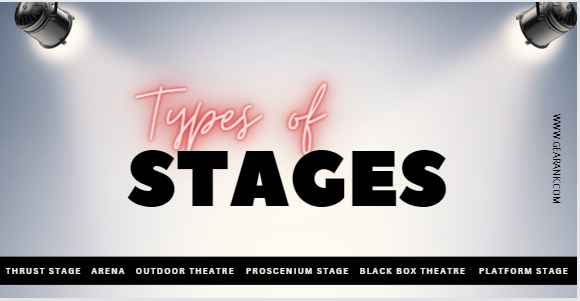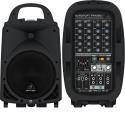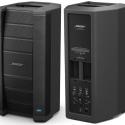Types of Stages - An Interesting Insight

Your stage setup and equipment will depend heavily on the types of stages you're using. So you have to know the size, shape, and features of the stage you're using.
This article is a comprehensive guide to the most common types of stages. You can learn the defining features of each type so you know exactly what kind of stage you are working with.
Main Types of Stages: End Stage Vs Open Stage
Most theater stages can be divided into two main categories - End-stage and Open Stage.
1. End Stages
End stages have a more traditional look. They usually have a raised platform with proscenium frame. This design ensures that all focus is on the stage, and that only one side can view the performance.
The audience is situated directly opposite the stage, looking in. They all view the stage from the same direction, sharing a similar view.
PA speakers are usually situated in front of the stage, so the sound you'll be hearing will be coming from the direction of the stage.
This type of stage puts the focus mainly on the stage and performance. There are less distractions, to better emphasize the visuals and sounds coming from the stage. Limiting the audience to just one view also makes it easier to plan and setup the stage. Aside from traditional music and theatre, this type of stage is also widely used in churches, talks, awarding ceremonies, and similar events.
The experience with this type of stage is focused and traditional. But it lacks the immersion and interaction that Open stages offer.
2. Open stages
Open stages are platform stages that thrust out into the audience. The audience can sit in front and on either side of the stage.
This allows the audience to see the stage from different angles, resulting in unique viewing experiences depending on where the audience is situated. This makes Open stages feel more closer and connected than traditional End stages.
Sound reinforcement is quite challenging because the audience is not gathered in just one side. Speakers are usually situated near the stage, so audio still comes from the direction of the stage. But there are times when support speakers far from the stage are needed to help cover the entire venue. Because of this set-up difficulty, you'll rarely see open stages in small venues. But open stages are the go-to configuration for major concerts, celebrations, and other crowd filled events.
Common Stage Designs
1. Thrust Stage
First, we have the thrust stage. The stage at the Globe Theatre is one of the most popular thrust stages. Thrust stages are one of the most common performance stages in the world. They're also one of the most flexible theatre types in gigging stages worldwide. What makes this stage distinct is the sitting area of the audience, which surrounds the stage.
Defining Features
This type of stage is more intimate as it literally 'thrusts' its way into the audience. Instead of acting like a frame for the audience to look into, the stage brings the performance closer to the audience.
Thrust stages can be shaped in either a half-polygon (with three sides or more) or a semi-circle. The forestage sticks out into the audience seating area.
This allows the audience to view the actors and performers from multiple angles. It is an excellent example of an open stage.
Stage Configuration
Other than the unique seating area, the configuration of a thrust stage is very similar to a proscenium stage. There are backstage areas, wings, and a back black wall.
This configuration performs all the technical benefits of a proscenium stage. But it allows for a stronger connection with the audience for emotional effect.
This is why thrust stages are often used for gigs and live music. The seating and stage configuration creates a more immersive experience for the audience and the performers!
As for lighting, spotlights are often used for thrust stages. This includes two from the front of the balcony beam and two spotlights from the electric pipe positions. These allow both up and downstage areas to be lit.
As for the PA system, thrust stages set up their speakers and mics like a proscenium stage. The sound is focused to the front of the stage, while still catering to the audience at the sides. Some musicians like to stack their speakers behind themselves (wall of amps) for added sonic and visual flair.
2. Arena Stage
Arena stages are a flat platform surrounded by tiered seating for the audience. They are substantial and square or rectangular with four sides.
You'll see them in places like sports arenas and big theatre productions. They are also the go-to setup for live concerts and other large-scale musical performances with packed audiences.
This means that most arena theatres come with their own expansive PA systems. They have powerful mixers connected to powerful array speakers usually set in the ceiling. The sound system has to be loud enough to reach the farthest point of the arena.
There is no 'front' of the stage, so microphones and other PA system equipment can be placed in any staging. Profile spots light the stage without blinding the audience on all sides.
Since the audience surrounds the stage, productions use limited props to not block the audience's view.
Arena stages allow audience members to have a more immersive experience. Those seated near the stage get the best experience.
The ones seated farther back won't be as happy. They will end up watching the performers on big screens. The experience will still be immersive, since you're enjoying a live performance with a crowd. But in big arenas, the performer can be as small as a dot, when seated at the farthest rows.
Another draw back drawback to Arenas is that sound can be convoluted. Sound can come from different directions depending on where the audience is seated.
3. Outdoor Theater
As the name suggests, this are stages that are set up outdoors, usually to a beautiful back drop. During the day, they use natural light and scenery to its advantage. At night, they use complex lighting to illuminate the stage and the audience.
This is the type of stage often set up when the musical performance is set in an outdoor sports arena. Big outdoor events have large stages with plenty of space for actors. They also have more seating capacity for entertaining larger audiences. Big outdoor theaters can even allow audiences to stand while enjoying the show.
There are also smaller outdoor stages, some even employ DIY platforms for doing small gigs in gardens and parks. This type of stage falls under Open Stage category, and allows for a more immersive experience.
Massive sound reinforcement systems are used for these type of venues. They need to be loud enough to reach the back row. The downside to big events like this is that sound quality tend to become secondary to projection and reach. Sound will be coming from different speakers, and you also have to deal with audience and environmental noise.
Another major concern for outdoor theatre is weather.
The Delacorte Theater in New York City's Central Park is a well-known outdoor theater!
4. Proscenium Stages
Next on the list is the proscenium stage! Proscenium stages are easily one of the most recognizable types of theatre stages. You've probably already seen one in action.
Proscenium stages are one of the oldest theater stages out there. They can be found in theatres and event halls between the 18th and 20th centuries.
This type of stage is widely used for theatrical performances, churches, schools, and more. The vibe of this stage is more formal, ideal for recitals and other performances that require minimal audience interaction.
Classical musicians prefer proscenium stages for their focused sound. While other rock musicians prefer open stages for better audience interaction.
Defining Features
The most defining feature of a proscenium stage is the proscenium arch.
The proscenium arch is an architectural arch shape that frames the stage. It creates a 'window' effect for the audience as they sit and watch the performance on stage.
The architectural frame is often decorated with stunning patterns and intricate designs. This makes the stage look like a beautiful painting - especially when background scenery is used on stage.
Another defining feature of the proscenium stage is the stage curtain. The curtain can fall or rise and hide those on stage from the audience's view. This makes it easier for performers to change scenes or props.
This is why many theatrical productions are done on a proscenium stage. It's one of the best types of performance stages for traditional performances and musicals.
Stage Configuration
A proscenium stage usually features a flat platform as center stage. On either side are two wings (wing stage right and wing stage left).
The stage wings allow performers and actors to move to the backstage area unseen by the audience. Actors enter and exit the stage through these narrow spaces.
The stage is very deep and sometimes extends in the front. This is called the apron or is sometimes called the forestage.
Proscenium stages are a type of end stage. Audience seating can be flat or raised on staggered platforms for tiered seating. And all of them are facing the stage.
Between the audience seating and the stage is the orchestra pit. This is where live music is played during performances.
At the back of the stage are black walls. Background scenery can be lowered from the fly tower above to the front of the wall.
Most proscenium stages use PA systems with three output speakers (left, right, and center) on stage facing the audience. Microphones for lead singers and speakers take center stage. At the same time, musicians and their instruments, amps, etc, are all placed outside of view.
Most musical shows can work with fewer spotlights. Theatre productions use spotlights, backlighting, and more so the whole stage is alight.
5. Black Box Theater
A black box theater, or studio theater, is a stage set in a single, painted black room.
On average, it's just the walls typically painted black, but some box theaters like to take this to another level. The seats, floors, and ceiling are also painted black in some black box theaters.
Black box theater spaces are very unique visually. They have little to no stage configuration.
The one rule is that the seats are on the same level as the stage. Because of this, black box theaters are flexible and can fit into small venues.
Since this stage is usually setup in small rooms, sound setup is simple. But you will have to make sure that you fix unwanted echoes and excess bass by setting up acoustic treatments and bass traps.
6. Platform Stage
As the name implies, this stage is a basic raised platform. It's easy to setup, and doesn't have to be too big. So it's great for pubic speaking, busking, recitals, and the like.
Platform stages are often setup in multipurpose venues that don't have an actual stage. They are common in school halls, and parks, for example.
They usually do not feature a curtain or wings, so there's no backstage area. They are basic and traditionally used for amateur productions.
Given their compact nature, they can work with smaller PA systems, including portable PA systems that run on batteries. They only need active speakers and a small mixer to that can accommodate a few mics and instruments. This type of stage is usually set outdoors, so the venue itself will be your backdrop, while the sun becomes your lighting fixture. When performing at night, one or two portable stage lights will be good enough. But a well thought out stage lighting design will always be better.
Final Thoughts
These are just six of the most common types of stages. And some stages don't really fall into these types strictly. You'll surely encounter modified or hybrid stages, combining aspects of the different types.
Even stages that fall under the same type will have unique characteristics. So each requires a specialized equipment, performance, and setup approach.
But with the information provided here, you can plan your layout and equipment to better utilize your stage's and venue's strengths.
If you have interesting and helpful stories about stages, leave them in a comment below.












